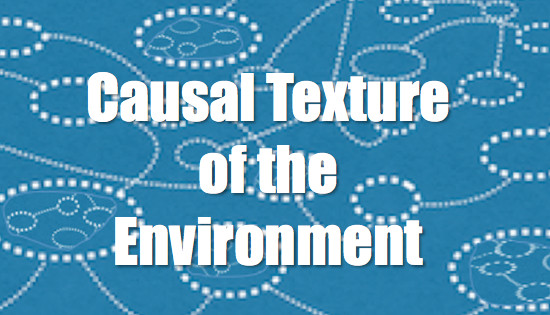For those who haven’t read the 1965 Emery and Trist article, its seems as though my colleague Doug McDavid was foresighted enough to blog a summary in 2016! His words have always welcomed here, as Doug was a cofounder of this web site. At the time of writing, the target audience for this piece was primarily Enterprise Architecture practitioners. [DI]
Published on February 4, 2016
This post is a quick summary (or reminder) of a seminal piece of work by Fred Emery and Eric Trist, which I personally think should be required reading for EA practitioners. We occasionally hear about outside-in thinking, and inside-out thinking, and this paper is a very good place to start to focus on these styles of thought about the architecture of enterprise.
The paper I’m referring to is named “The Causal Texture of Organizational Environments”*. Emery and Trist pioneered the idea of sociotechnical systems at the Tavistock Institute in London in the 1950s. There’s a lot that can be said about organizations as sociotechnical systems. For instance, it’s worth noting this quote from Wikipedia (as of 3 February, 2016):
… Read more (in a new tab)“Sociotechnical theory … is about joint optimization, with a shared emphasis on achievement of both excellence in technical performance and quality in people’s work lives. Sociotechnical theory … proposes a number of different ways of achieving joint optimisation. They are usually based on designing different kinds of organisation, ones in which the relationships between socio and technical elements lead to the emergence of productivity and wellbeing.”
For those who haven’t read the 1965 Emery and Trist article, its seems as though my colleague Doug McDavid was foresighted enough to blog a summary in 2016! His words have always welcomed here, as Doug was a cofounder of this web site. At the time of writing, the target audience for this piece was primarily Enterprise Architecture practitioners. [DI]
Published on February 4, 2016
This post is a quick summary (or reminder) of a seminal piece of work by Fred Emery and Eric Trist, which I personally think should be required reading for EA practitioners. We occasionally hear about outside-in thinking, and inside-out thinking, and this paper is a very good place to start to focus on these styles of thought about the architecture of enterprise.
The paper I’m referring to is named “The Causal Texture of Organizational Environments”*. Emery and Trist pioneered the idea of sociotechnical systems at the Tavistock Institute in London in the 1950s. There’s a lot that can be said about organizations as sociotechnical systems. For instance, it’s worth noting this quote from Wikipedia (as of 3 February, 2016):
… Read more (in a new tab)“Sociotechnical theory … is about joint optimization, with a shared emphasis on achievement of both excellence in technical performance and quality in people’s work lives. Sociotechnical theory … proposes a number of different ways of achieving joint optimisation. They are usually based on designing different kinds of organisation, ones in which the relationships between socio and technical elements lead to the emergence of productivity and wellbeing.”




